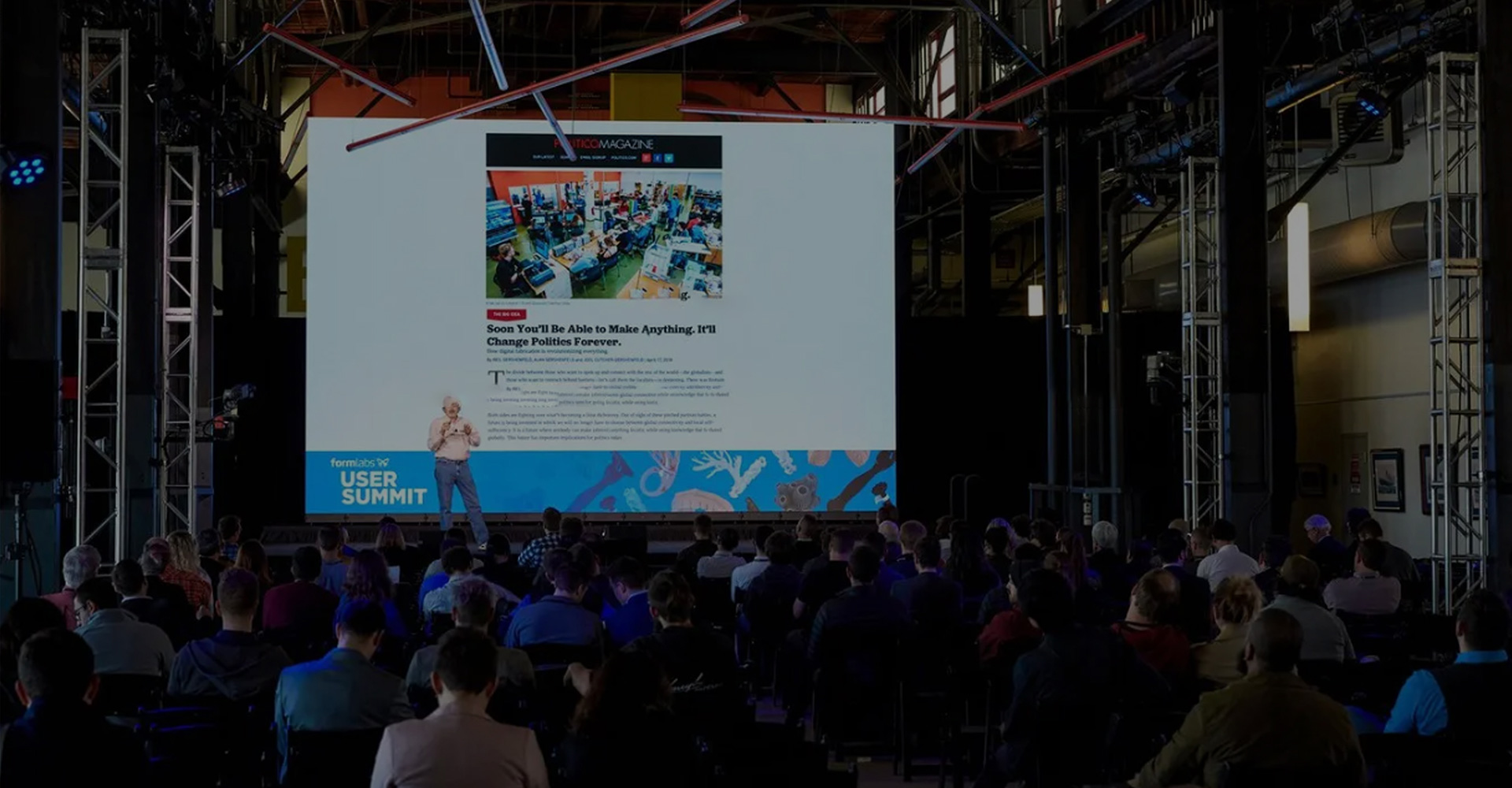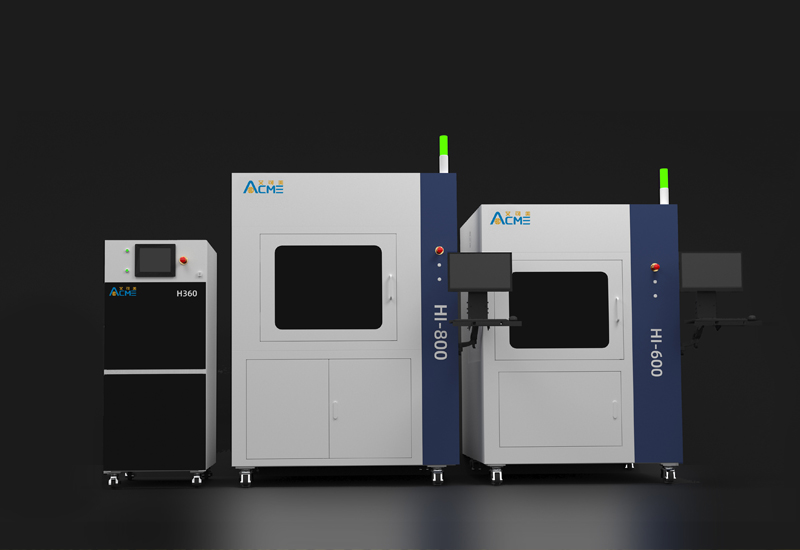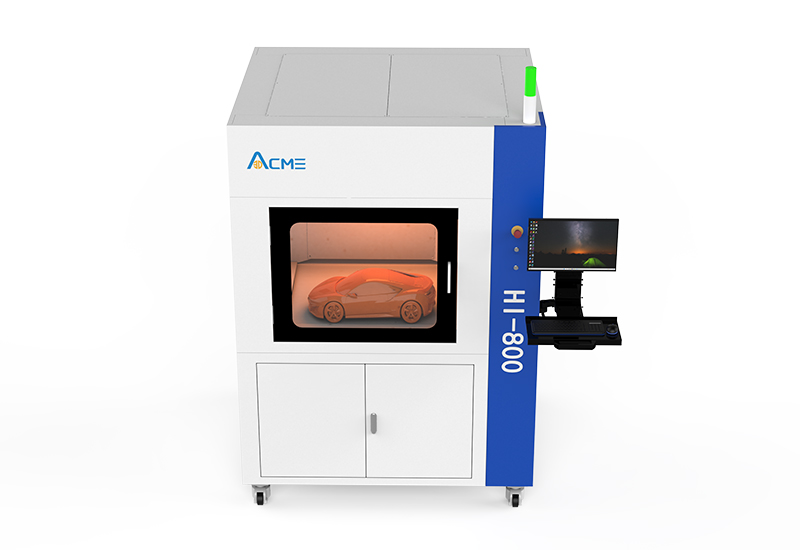
Why should the 3D model of light curing be supported? In the 3D printing model, it must be inseparable from the support. If there is no support, those suspended or tilted models will not be printed out, so this is an unavoidable trouble. Next, Acme3d Xiaobian will talk about when the support structure is needed in detail. How to add better?
1. When do you need support structures?
When the model has a suspension or bridge structure, there is nothing underneath to hold it up, then a support structure is needed. Not all overhangs need support. If the vertical Angle of an overhang is less than 45 degrees, the overhang can be printed without support. The horizontal deviation of the 3D printer's movement between the connected layers is very small (hardly noticeable). Thus, one layer is not completely superimposed on the previous layer, but is superimposed on a small offset. This allows the printer to print suspended objects that do not tilt too much vertically. Any overhang less than 45 degrees can be supported by the previous plane. 45 degrees is generally considered the critical Angle. If the perpendicularity is less than 45 degrees, no support is required. But it varies from person to person, and a lot depends on your printer, including its capabilities and the materials you're using. A poor printer may not be able to print a 35 - or 40-degree vertical suspension!
2.3Defects of D printing support structure
If 3D printing is used in production, then the cost per model will matter. If you're an amateur on a tight budget, you might be concerned about this too. The 3D printing support structure significantly increased the cost of the model. Supporting structures consume material, which is then dismantled and discarded. So every time 3D printing adds a supporting structure, it increases the cost of the model. The support structure also increases printing time. Increased post-processing work, such as bracing removal. Support structures are connected and inserted into the surface of the model. If the removal of 3D supports is not careful, defects may be left on the surface of the model. At worst, parts of the model may break along with the supporting structure. All in all, there are obvious drawbacks to using support structures. Therefore, minimize the use of support structures and only add support when necessary.

3. Support type
Tree support: A tree is a tree-like structure that supports the overhanging part of the model. This type of 3D-printed support is only connected to a number of dangling position points. The advantage of tree supports is that they are easier to remove and do not damage the overhanging underside too much. Note, however, that it is only suitable for non-flat suspensions, such as the tip of the nose, fingertips or arches. Tree supports do not provide sufficient stability for plane suspensions.
Linear/bellows support: A common type of support used in 3D printing. This type of support consists of vertical columns which are attached to the whole suspension. Almost every suspension and span bridge can use this support. But it is more difficult to remove and may cause damage to the surface of the model.
4. Removal of brace
First, take a look at the support structure, where it's easy to reach and try to break the support with your fingers. As gently as possible. If done correctly, most of the support should fall off easily. Use the tool to cut off some of the support in the corners. Opinions vary as to which tool is best used. Ability to use needle-nose pliers, scraper or carving knife. Of course, you can combine them. When using a knife or spatula, heat the model or blade moderately. The support structure is easier to remove. You can use a small butane spray gun, but make sure you don't destroy the model. Many people do not recommend using a carving knife because it is very sharp and dangerous. Sandpaper is also a good tool.
5. chamfer
Another way to eliminate support is to chamfer. Chamfering is an ingenious way to turn an otherwise annoying hang into a safe hang with an Angle of less than 45 degrees. In short, in many cases, support structures are unavoidable. However, it is also necessary to ensure the stability of the supporting structure without wasting too much material, so that it is easy to remove and does not damage the surface of the model.

Okay, so why do we need support for light curing 3D printing models? How to add better? At this point, if you have a better way to add support can also communicate with Xiaobian discussion, if you want to buy a light curing 3D printer can also contact us, Hagong 3D focus on the research and development of light curing 3D printing equipment, manufacturing and industry application solutions; Focus on 3D printing modern, intelligent, digital industrial manufacturing scene construction; Focus on 3D printing related fields of technical equipment research and development and process development. From the research and development, production and sales of 3D printing equipment, printing consumables and customized products, the vertical layout of the whole industrial chain has been realized.
+86 19958086067
sales@3dacme.com